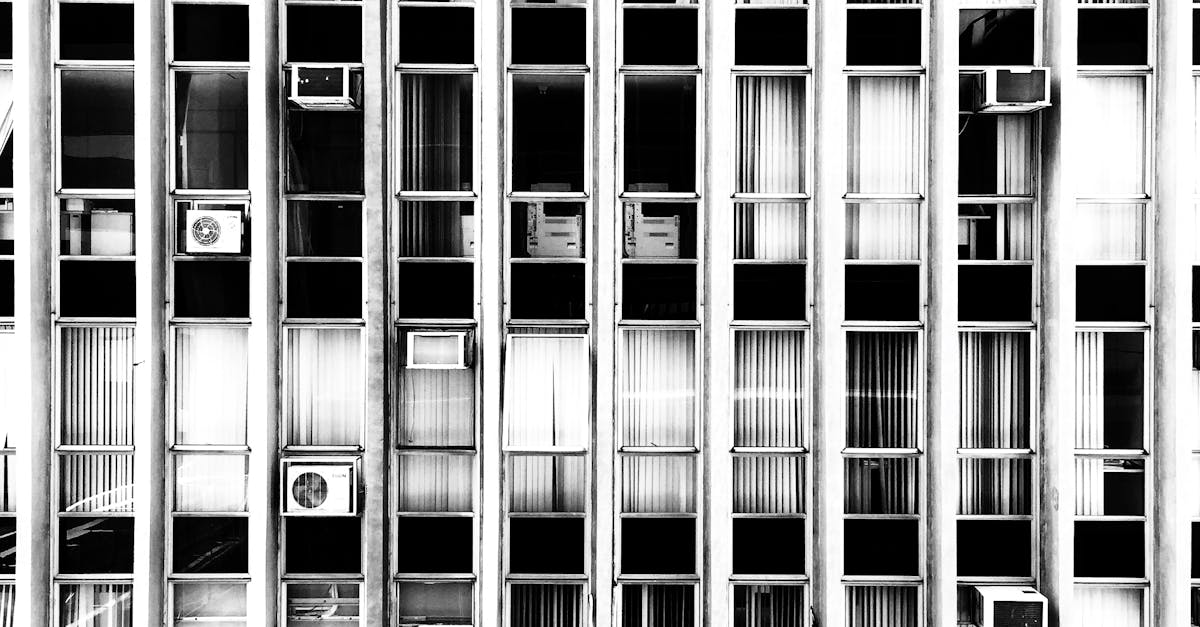
Ducted Split System Installation: Positioning the Indoor and Outdoor Units
System Efficiency
To ensure optimal efficiency of your ducted split system, strategic placement of both the indoor and outdoor units is crucial. The indoor unit should be positioned in a central location within the house to allow for even distribution of air throughout the different rooms. Placing the outdoor unit in a shaded area can help prevent overheating and reduce the workload on the system, ultimately improving its efficiency and longevity.Table Of Contents
Moreover, ensuring there are no obstructions around the outdoor unit, such as plants or debris, can also contribute to better system efficiency. Regular maintenance, including cleaning or replacing filters as needed, is essential in keeping the system running smoothly and efficiently. By following these guidelines and considering the placement of both units, you can enhance the overall performance of your ducted split system.Extending the Lifespan of Your Ducted Split System
How to enhance efficiency through strategic unit placement
Enhancing the efficiency of your ducted split system through strategic unit placement is crucial to ensure optimal performance. When positioning the indoor unit, it is recommended to place it in a central location within the house to allow for even distribution of air throughout the different rooms. This can help maintain a consistent temperature throughout the space and reduce energy wastage.Maintenance Practices for LongTerm Use
For the outdoor unit, ensure it is placed in a well-ventilated area where there is sufficient clearance around the unit for proper airflow. This will prevent the system from overheating and improve its overall efficiency. Additionally, positioning the outdoor unit in a shaded area can help reduce the workload on the system, especially during hot summer days.Energy Efficiency Tips for Optimal System Performance
Noise Reduction Strategies
When aiming to reduce the noise produced by your ducted split system, implementing effective strategies can significantly contribute to creating a more peaceful indoor environment. One technique to consider is ensuring proper installation of the outdoor unit away from windows, doors, or areas where noise could cause disturbance. Placing the outdoor unit strategically can help minimize the sound that enters your living spaces and enhance overall comfort.Maximising Efficiency Through Proper Maintenance
Another way to reduce noise levels is by installing vibration-absorbing pads or mounts under the outdoor unit. These pads work by dampening the vibrations produced during the operation of the system, thereby reducing the amount of noise transmitted through the structure of the building. By incorporating these simple yet effective noise reduction strategies, you can enjoy the benefits of your ducted split system without the unwanted disruption of excessive noise.Hiring a Qualified Technician for Ducted Split System Maintenance
Techniques to minimise noise disruption from your split system
To reduce noise disruption from your split system, consider the placement of the outdoor unit. Install the outdoor unit away from windows, doors, or areas frequently used for relaxation to minimise disturbances. Adequate spacing between the outdoor unit and surrounding walls can also help mitigate noise levels.Ensuring Expert Handling of System Components
Furthermore, ensure that the indoor unit is positioned in a central location within the room to distribute air evenly and reduce the need for high fan speeds, which can amplify noise. Additionally, avoid installing the indoor unit directly above areas where people sit or sleep to prevent discomfort from the sound of the airflow. By strategically placing both the indoor and outdoor units, you can create a more tranquil indoor environment while enjoying the benefits of your ducted split system.FAQS
Maintenance Guidelines
Regular maintenance is imperative for ensuring the optimal performance of your ducted split system. To keep your system running smoothly, it is recommended to schedule professional inspections at least once a year. During these inspections, the technician will check for any issues, clean components, and make any necessary adjustments to ensure efficiency.Why is regular maintenance important for ducted split systems?
In addition to professional maintenance, there are some simple steps you can take to help maintain your ducted split system. Regularly check and replace air filters to ensure proper airflow and reduce strain on the system. Keep the area around the outdoor unit clear of debris and vegetation to prevent airflow blockages. Lastly, ensure that all vents and ducts are open and unobstructed to allow for efficient air circulation throughout your space.
Steps to keep your ducted split system running smoothlyHow often should I schedule maintenance for my ducted split system?
FAQS
Regular maintenance is crucial for ensuring the long-term functionality and efficiency of your ducted split system. By following a consistent maintenance schedule, you can prevent potential issues and extend the lifespan of your system. Cleaning or replacing filters regWhat are the maintenance guidelines to ensure the smooth operation of a ducted split system?
A qualified technician possesses the necessary skills and knowledge to comprehensively assess and address any potential issues within the system components. From the intricate network of ducts to the complex mechanisms